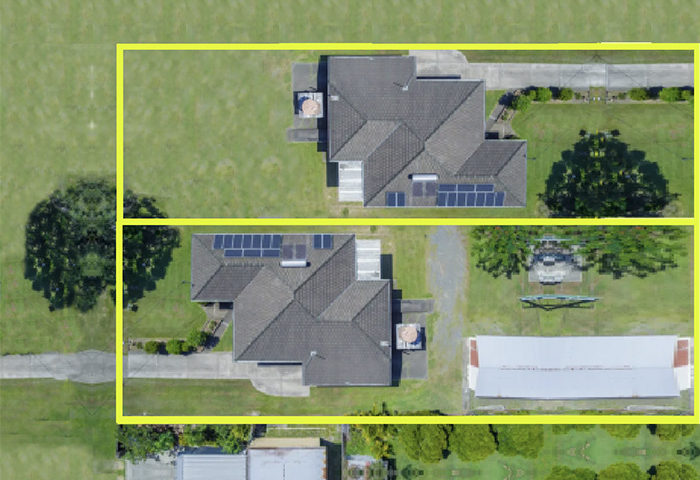- The first step is making the call.
- 1300 022 482
- hello@searchpartyproperty.com.au
Guide to Buying Splitter Blocks

Not that long ago, splitter blocks were essentially the Holy Grail for property investors. They were seen as an easy way to realise a solid return, without putting in too much effort. In fact, back then, the hardest part was finding and securing a splitter block, given how popular they were.
But these days, getting the most from a splitter block takes a little more work. They are now even harder to find, attract more competition, and usually come with a few important caveats. That said, there is still good money to be made from a splitter block if you know what you are doing.
Here we take a closer look at what splitter blocks are and why they are so sought-after by investors. We will also share our advice on what to watch out for when looking at a splitter block.
The value of a good splitter block
In the simplest terms, a splitter block is two (or more) separate lots that are combined on a single title. This usually means that the allotment is larger than other blocks in the area, which, in itself, is appealing. But it is mostly the development potential splitter blocks provide that is driving the significant interest from investors.
In particular, investors are drawn in by the ability to easily separate a splitter block into multiple standalone lots. Because, unlike a standard block, a splitter block can be divided without the need for development approval – hence the name. This means that, with minimal effort, you can effectively almost double the potential value of the block.
Traditionally, most investors have chosen to simply divide their splitter blocks into the constituent components. Generally, they would then sell off the new land parcel(s) to realise the value they created by separating them. They would also aim to achieve additional returns from the remaining block by redeveloping or renting the existing house.
More recently, we have seen an increase in investors maximising their returns by fully developing their splitter blocks. This means that, in addition to separating the blocks, they also replace any existing structures with new homes on each new block. This is a particularly popular choice in areas where there is high demand for new homes, but limited land available.
While this approach does require significantly more effort, both in planning and execution, the returns should be much higher. Creating multiple new homes also provides additional flexibility, with each property able to be sold, rented, or held for personal use. As such, splitter blocks can suit a range of investors, investment styles, and investment strategies.
Selecting the right splitter block
Due to the ongoing appetite for them, splitter blocks are becoming increasingly scarce. However, competition for them remains strong so you will generally need to pay a premium to secure one. This has affected the investment potential of most splitter blocks, particularly for less experienced investors.
That said, with some careful research and planning, it is still possible to achieve solid growth. It is just a matter of finding a block that is well located, but easy to separate and develop. This means paying close attention to:
- Existing structures: Most splitter blocks will already have a house on them, and it will usually be built across the constituent lots. Unless this structure can be easily moved, it will need to be removed before the lots can be separated. As this may require planning permission, it is best to look for a block with all existing structures on one lot.
- Connection to services: Each lot will need to have its own connection to key services, like sewage and stormwater. If the existing property is connected via a neighbouring property, this can be quite difficult – and expensive – to establish. As such, it is important to check existing connection arrangements and consider how you will extend them.
- Site dimensions: While splitter blocks tend to be larger than average blocks, they still come in a range of sizes and shapes. To be functional once split, a block of two lots usually needs to be a minimum of 20m wide. At this width, the resulting lots will still have sufficient space to comfortably fit a new home.
- Local planning restrictions: The requirements splitter block developments need to meet vary depending on the location of the property. For example, in certain areas, there will be restrictions on demolition works and guidelines for the design of new builds. As these will shape your development plans, it is important to understand them before committing to buying a splitter block.
Other things to consider when buying a splitter block
The unique structure of a splitter block means there are a few extra things to think about when developing one.
Most significantly, there are a few additional costs you will need to make sure you budget for. For example, there will be the legal fees associated with the establishment of the additional title(s). There will also be additional sales and marketing costs if you choose to sell off the lots once separated.
There are also some logistical considerations that you will need to factor into your development plans. For example, additional fencing will be required to define the newly separated blocks. And, if you are creating a new driveway, you may need to work with the local council or State government.
Want to discuss this further?
If you would like to learn more about splitter blocks, or to find one for yourself, contact Search Party Property. We have significant experience working with this type of investment and can help you decide if it suits your strategy. We can also help you research available properties and identify the block that best fits your development plans.




